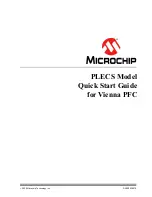
EATON Diesel Plus
O & M Manual IM05805019K-002
Diesel Engine Fire Pump Controller
Effective April 2015
EATON INDUSTRIES CANADA COMPANY
www.chfire.com
7
•
Low Fuel -
This red LED will be illuminated when the
controller receives a signal from the fuel level switch
indicating there is low fuel. (Terminals 11 and 38)
•
Low Suction Pressure/Low Foam Level -
This red LED will
illuminate when a low suction pressure signal has been
received. A low suction pressure switch can be added to the
controller as option P7. (Terminals 11 and 37)
•
Low Oil Pressure -
This red LED will be illuminated when the
controller receives a signal from the engine indicating there
is low oil pressure. (Terminal 4)
•
Engine Overspeed -
This red LED will be illuminated when the
controller receives a signal from the engine indicating there
is an engine overspeed condition. (Terminal 3)
•
High Engine Temperature -
This red LED will be illuminated
when the controller receives a signal from the engine
indicating there is high engine temperature. (Terminal 5)
•
Electronic Control Module Warning
-
This red LED will be
illuminated when the controller receives an Electronic
Control Module Warning signal from the engine.
(Terminal
z
303)
•
Electronic Control Module Failure
-
This red LED will be
illuminated when the controller receives an Electronic
Control Module Failure signal from the engine. (Terminal 304)
•
High Raw Water Temperature
-
This red LED will be
illuminated when the controller receives a High Raw Water
Temperature signal from the engine. (Terminal 310)
•
Low Raw Water Flow -
This red LED will be illuminated when
the controller receives a Low Raw Water Flow signal from the
engine. (Terminal 311)
•
Low Engine Temperature
-
This red LED will be illuminated
when the controller receives a Low Engine Temperature
signal from the. (Terminal 312)
•
Fuel Spill
-
This red LED will be illuminated when the
controller receives a contact closure from the fuel tank
sensor. (Terminal 40)
3.2.2 Pushbuttons
•
Data | Print -
The data, print button allows the user to enter a
multi-task menu where they can initiate the download of the
message history, system diagnostics, system configuration
to an external USB drive, upload custom messages, and an
additional language. If the optional printer (X1) is included
with the controller, the user will be able to initiate a print
cycle through this menu list.
•
Lamp Test -
The lamp test button allows the user to test all of
the LED’s on the operator panel. Pressing and holding this
button will illuminate each LED on the operator panel in
successive steps.
•
Reset | Save/Exit -
The reset/save/exit button serves two
functions. Pressing the reset button will reset most alarms
that are present on the controller at that time. If the alarm
condition still exits it will alarm again. When the user is in the
programming mode, pressing the save/exit button will save
all of the user adjusted values and make the recent changes
active.
•
-
The up arrow is used to navigate the main display as well
as the menu systems.
•
-
The down arrow is used to navigate the main display as
well as the menu systems.
•
| Ack. -
The enter and acknowledge button serves two
functions. When navigating the main display, the enter button
will allow the user to enter/exit the message history,
statistics, and diagnostics. When in the menu system, the
enter button will allow the user to change the programmed
set points, and navigate to the next menu item.
•
Menu -
Pressing the menu will allow the user access to the
programming mode of the controller. When in the
programming mode, the menu button will serve as a back
button in most cases to return to the previous menu heading.
3.3 Display Board Access Area
The display board is housed in a protective case that is
mounted on the inside of the controller door. Access to
communication ports and terminals is possible when the
controller door is open.
NOTE
To allow for uniform identification, the frame of reference when
discussing the access area is with the panel door open and the user facing
the back of the Diesel Plus controller.
Located on the bottom of the chassis is the optional USB port,
the optional Ethernet port, the I/O board communication and
power cables. The optional RS232 and RS-485 ports are located
on the right hand side of the chassis.
The display contrast adjustments can be made via the open
potentiometer dial in the back of the chassis.
3.4 Power I/O Board
The I/O Board is used for connecting all alarm input and output
signals. Optional relay expansion boards may also be
connected to the I/O board.
Refer to the Field Connection diagram mounted on the inside of
the controller door for all connection points specific to the
controller.
3.5 Engine Board
The Diesel Engine Board houses terminals 1 through 12, 301,
302, 303, 304, 310, 311, 312 used to connect to the engine
control panel, as well as the incoming AC Power
terminals (L, N, G).
Also located on the engine board, are the Crank relays (8CR and
9CR), the Fuel Stop relay (7CR), the DC breaker switches (CB1
and CB2) and main AC power switch.
©
©
©
















































